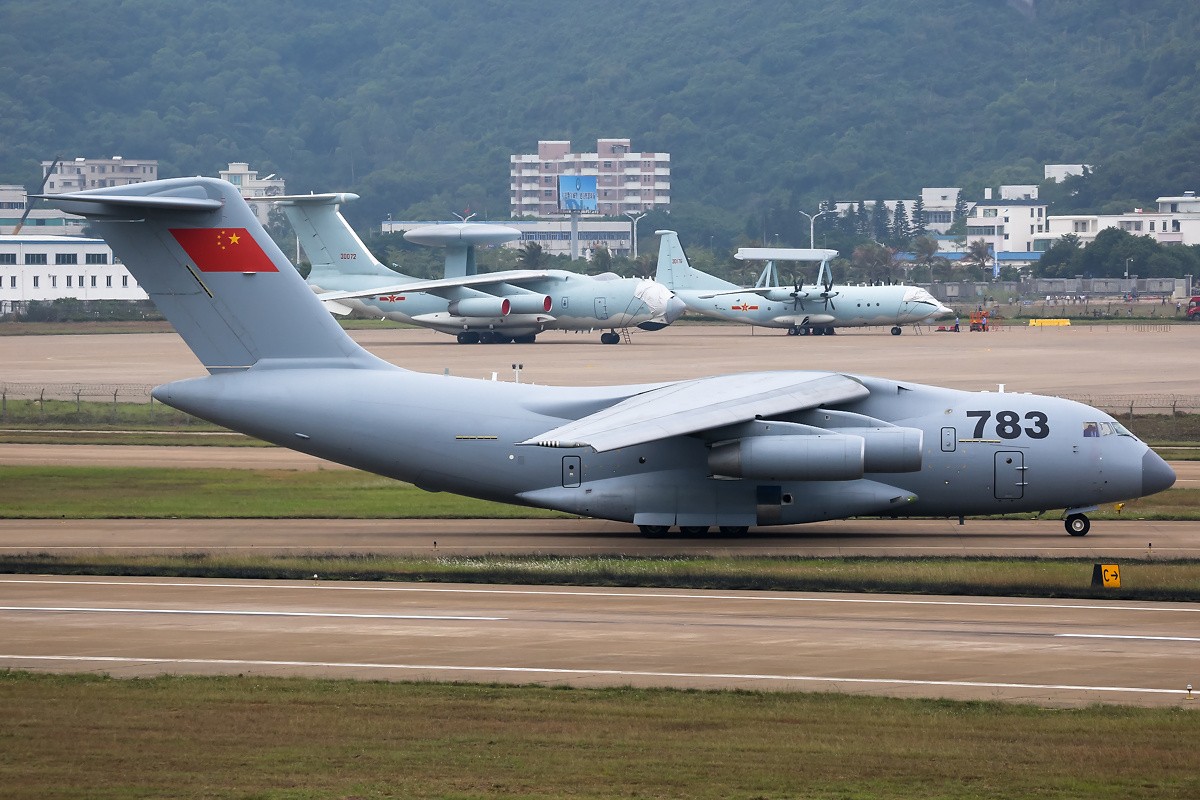Officially unveiled in 2006, the Xian Y-20 code-named “Kunpeng” is a large military transport aircraft developed by Xi’an Aircraft Industrial Corporation, a part of the Aviation Industry Corporation of China. It is being built for the People’s Liberation Army Air Force under assistance from Russia and Ukraine.The aircraft is named Kunpeng after the mythical bird of ancient China that can fly thousands of kilometers. It is the first indigenous-developed heavy military transport aircraft and also the biggest domestic strategic airlifter ever built in China. The aircraft is more commonly known by its nickname Chubby Girl in reference to its wide fuselage.
The plane has been designed for deployment in the transportation of personal and heavy equipment during military assault, humanitarian assistance and peacekeeping missions. It can also be used for airborne early warning and control, anti-submarine warfare and aerial refueling missions. The People’s Liberation Army Air Force requires 400 Y-20 transport aircraft and expects deliveries to begin in 2017. With a payload capacity of 60-66 tonnes, it can carry most large combat and support vehicles, including the Type 99 series tanks.
[komper pid=12 category=5]
The 200-ton military cargo aircraft features a deep and wide fuselage for the cargo section and a T-tail empennage structure with high-mounted horizontal surfaces on the vertical stabilizer. The center fuselage is hinged with moderately sweptback, high-mounted monoplane wings integrating triple-slotted trailing-edge flaps developed by the Ukrainian Antonov Design Bureau. The twin, Russian D-30KP-2 turbofan engine nacelle is mounted under each wing and composite materials are used in the airframe to keep the weight low. It is capable of performing missions in adverse weather conditions and can land at small airports in mountainous regions.
The Y-20 airlifter has a glass cockpit, which accommodates three crew members, including two pilots and a loadmaster. Cargo is loaded through a large rear ramp assembly that allows for rolling stock and loading / unloading large-sized cargo and equipment. It incorporates two main heavy-duty retractable landing gear units and a nose assembly, consisting of three rows, with a pair of wheels for each row, amounting to six wheels in total for each unit. The steerable nose gear includes a standard twin- wheel leg unit for runway taxing, and the rugged landing gear allows take-offs and landings on rough airfields or unpaved runways. The aircraft measures 47 metres in length, 18 metres in height and has a wingspan of 50 meters.
The shortest take-off distance of the Y-20 is 600 to 700 metres, with a maximum take-off weight of 220 tonnes. This is achievable with the four Soloviev D-30KP-2 turbofan engines developing a maximum power output of 14 tonnes, offering a higher bypass ratio for fuel efficiency and powering this behemoth to a cruise speed of Mach 0.75 (918 km/h). Its range is estimated to be 4,500 km with maximum payload, 7,800 km with 40 tonnes and 10,000+ km with paratroops operating at a service ceiling of 42,700 feet
By developing this airlifter, China is devoting major resources to military transport development, design, technologies and production capabilities. It is likely that they will continue development of large and heavy transport aircraft not only for the domestic sector but for export to other countries as well.



